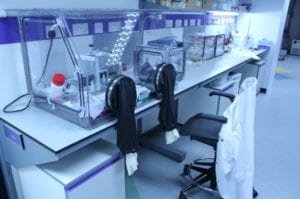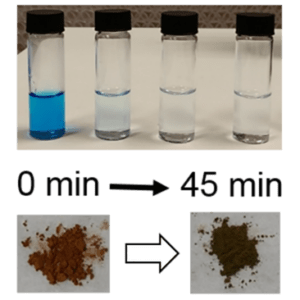This is a post from NYU Abu Dhabi. Although January Term originated with NYU Abu Dhabi, now other students in NYU’s global network, notably those from NYU Shanghai, have the opportunity to experience a January Term.
Education at NYU Abu Dhabi is not just about learning facts from textbooks and passing multiple choice exams. It’s an immersive experience for NYUAD students, who, each January Term choose hands-on classes in cities from Al Ain to Buenos Aires that challenge their perceptions of the past and enrich their visions of the future.
There are dozens of courses offered in J-Term that get students out of the classroom to learn about the world as it was before, and experience the world as it really is today, like Jazz or the Financial Crisis taught in New York City, Emirati Arabic in Al Ain, Museum History in Berlin, and these seven examples that span the globe. Note: course descriptions have been edited.

Oasis Coast and Mountain
Faculty: Steven C. Caton and Donald M. Scott
Course location: UAE and Oman
A course that challenges students’ perceptions of Arabian landscapes as being mainly desert by showing them three distinct habitat zones: desert oasis, maritime ports, and mountain farms all within 250 kilometers of each other across the UAE and Oman.
Students learn through observational site visits, direct encounters and interactions with local peoples and places through walking tours, interviews, photography and sketching.
Imagining the Renaissance City
Faculty: Jane Tylus
Course location: NYU Florence
Northern and central Italy’s bustling towns inspired many of today’s modern cities and also pioneered recognizably modern artistic, cultural, and engineering practices. Florence was a powerhouse of culture and industry and Siena the ‘Wall Street of Europe’ with the skyline to match.
Students spend three weeks getting to know these towns intimately. Explore downtown Florence, Siena, and the Tuscan countryside. Walk from the town of Fiesole (with its Etruscan ruins and Roman theater), to Monte Ceceri (from whose summit a student of Leonardo da Vinci’s tried to fly; good start, sad ending). Visit seats of government and Renaissance orphanages, climb towers for bird’s-eye views, prowl a crypt recently excavated under Siena’s cathedral, visit churches on hills overlooking Florence and the cells of monks, and walk the trail of the stonecutters to see where Michelangelo found his stone.

Coastal Urbanization
Faculty: John Burt
Course location: Sydney
Over 80 percent of the Australian population lives within 100 kilometers of a coast and virtually all major Australian cities occur on coastlines. As a result, Australia’s coastal environments have been substantially modified to suit human needs.
Using Sydney’s terrestrial, marine, and built environments as a natural laboratory for field research, students collect environmental data throughout the city and use geographic information systems (GIS) to examine the spatial patterns of human impacts to Sydney’s environment and compare their results with patterns observed in other coastal cities.
Prague
Faculty: Professor Michael Beckerman
Course location: Prague
Prague should have been destroyed during the Second World War, like other major cities in Europe, but somehow it wasn’t. Its remarkable survival allows us to explore Central European history and culture in the context of a completely preserved inner urban core dating back to the Middle Ages.
Class time includes walking tours around Prague, trips to museums, castles, theaters, classical concerts including Mozart’s Magic Flute and Janacek’s From the House of the Dead, and several excursions outside the city to the Eastern Province of Moravia, birthplace of Mahler and Freud, and to the UNESCO Heritage site of Cesky Krumlov.
Democracy and its Critics
Faculty: Philip Mitsis
Course location: Abu Dhabi / Athens
An examination of one of history’s most radical and influential democracies, ancient Athens.
Students assume historical roles in key decision-making institutions and debate questions about democratic procedures, the extension of voting rights, religion and free speech, foreign policy, etc., often in the very locations where these ancient debates occurred.
The Idea of the Portrait
Faculty: Shamoon Zamir
Course location: London
The course draws upon the rich resources of London’s museums and galleries to examine a wide range of portraits and self-portraits in painting and photography from different periods of history and from different cultures.
Students visit The National Gallery, British Museum, Tate Modern, Tate Britain, the Queen’s Collection, the Courtauld Gallery, the National Portrait Gallery, and the Victoria & Albert Museum, as well as the Ashmolean Museum in Oxford.
Creative Cities
Faculty: Arlene Davila
Course location: Buenos Aires
Latin America has been undergoing rapid urbanization and is increasingly recognized as a continent made up of “countries of cities,” yet the dominant Latin American image has been on indigenous or traditional communities, which are always imagined as rural and authentic, rather than modern and urbanized.
Buenos Aires provides an urban laboratory to explore culture in urban development, urban tourism, and the marketing and internationalization of tango. Guided tours and guest speakers enrich students’ appreciation of contemporary Buenos Aires.
Original post by Andy Gregory, NYUAD Public Affairs, available here.
 Learning science is about to get a whole lot cooler for hundreds of high school students in Kenya. An international project co-led by an NYU Abu Dhabi chemist will deliver digital education materials such as interactive modules, online simulations, and even virtual chemistry experiments to many classrooms.
Learning science is about to get a whole lot cooler for hundreds of high school students in Kenya. An international project co-led by an NYU Abu Dhabi chemist will deliver digital education materials such as interactive modules, online simulations, and even virtual chemistry experiments to many classrooms.












